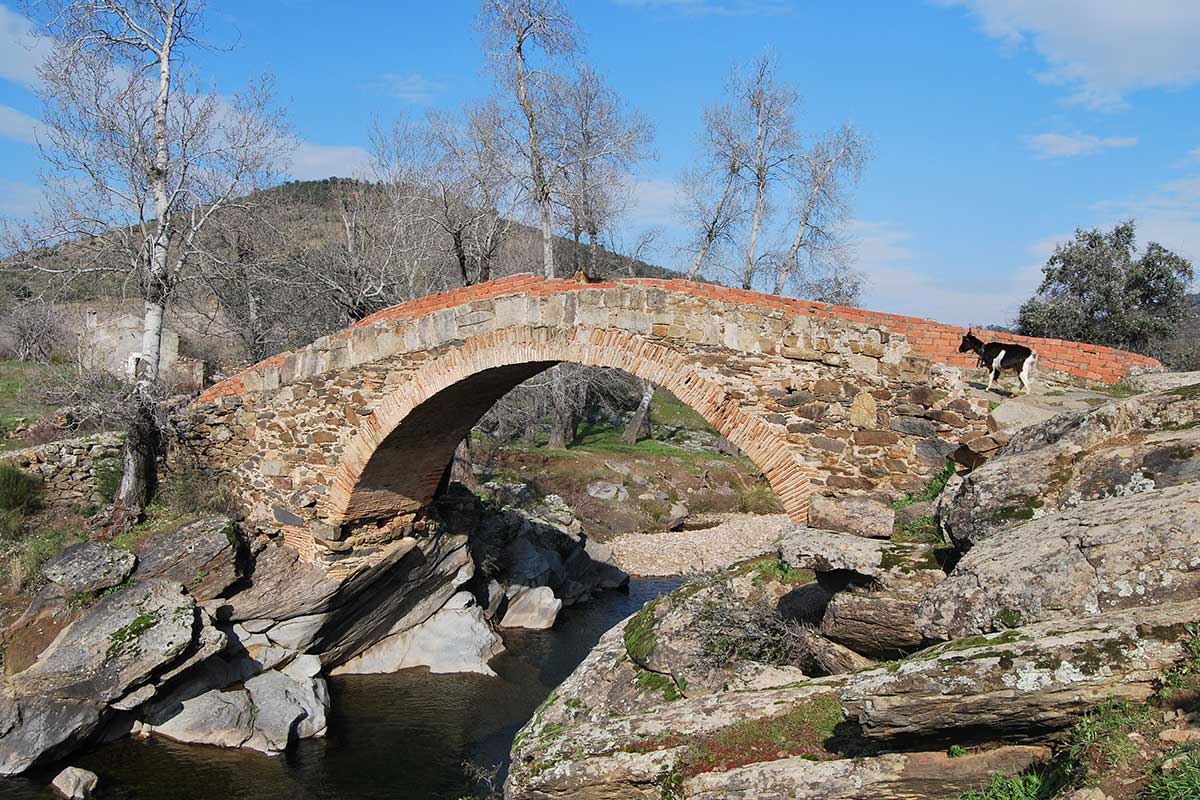LOCATION AND ACCESS
The source of the River Gualija lies in the vicinity of the village of Navatrasierra in the heart of the Guadarranque syncline; it runs northwest until it meets the River Tajo at what is today the Valdecañas Reservoir, very near the Roman ruins of the city of Augustobriga.
It owes its name (Río de Alija) to the presence on its right-hand bank on a steep granite hill of the ruins of the Arab castle of Alija (Hisn Alixa), a bastion of the Tajo frontier during the Reconquest.
The San Román chapel and its Roman ruins, the olive grove, and the adjacent mine are located some three kilometres south of the town of Peraleda de San Román. Access to the mine is by means of a road that runs directly from the town towards the banks of the River Gualija on its right-hand side. Above the old olive grove the outcropping of a wide dike of quartz can be seen with the abandoned mine workings.

